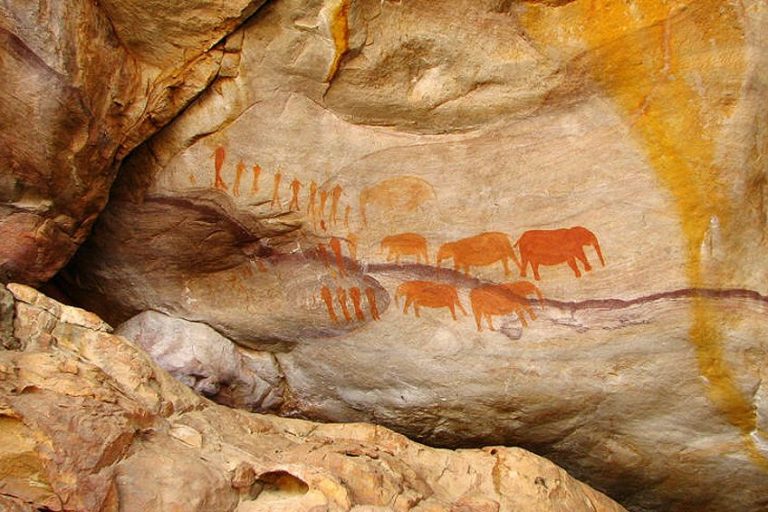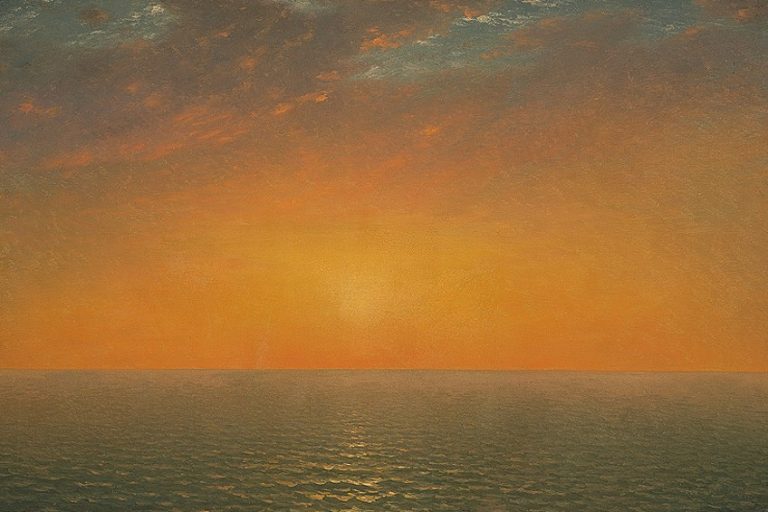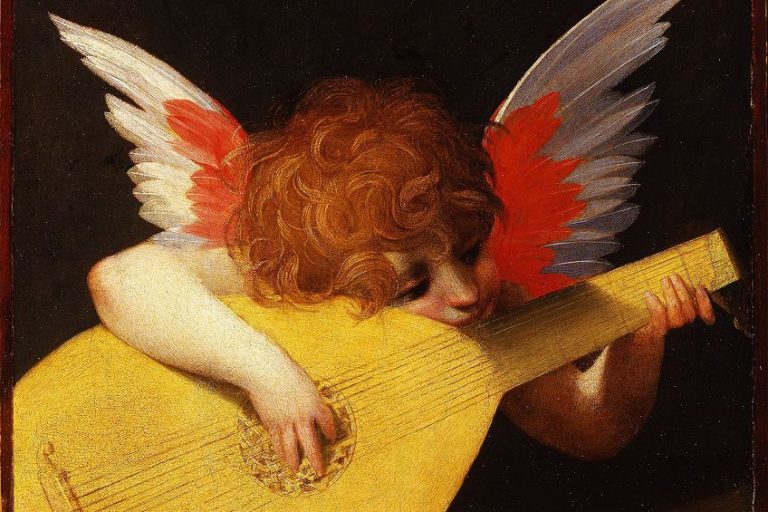South American Art – An Exploration of Latino Art History
We are all familiar with South America and the Latino cultures and their languages. If you live in America, you will have first-hand experience and interactions with the Latin cultures, which are culturally diverse and rich in their heritage of art, music, food, languages, and so much more. But how much do we really understand about Latin American cultures? This is where our Latino art history studies give us guidance. In this article, we will discuss South American art as well as how it fits into the broader collective of Latin American art.
A Brief Historical Overview of Latin America
When we speak of South American art, we sort of speak of one of the many branches that make up Latin American art. Firstly, the term Latin America is a collective term, encompassing areas of South America, Central America, as well as countries from the Caribbean. It includes countries where languages originate from the Latin language for example French, Spanish, and Portuguese.
If we look at South America specifically, it includes countries like Argentina, Bolivia, Brazil, Chile, Colombia, Ecuador, Guyana, Paraguay, Peru, Suriname, Uruguay, Venezuela, and others.
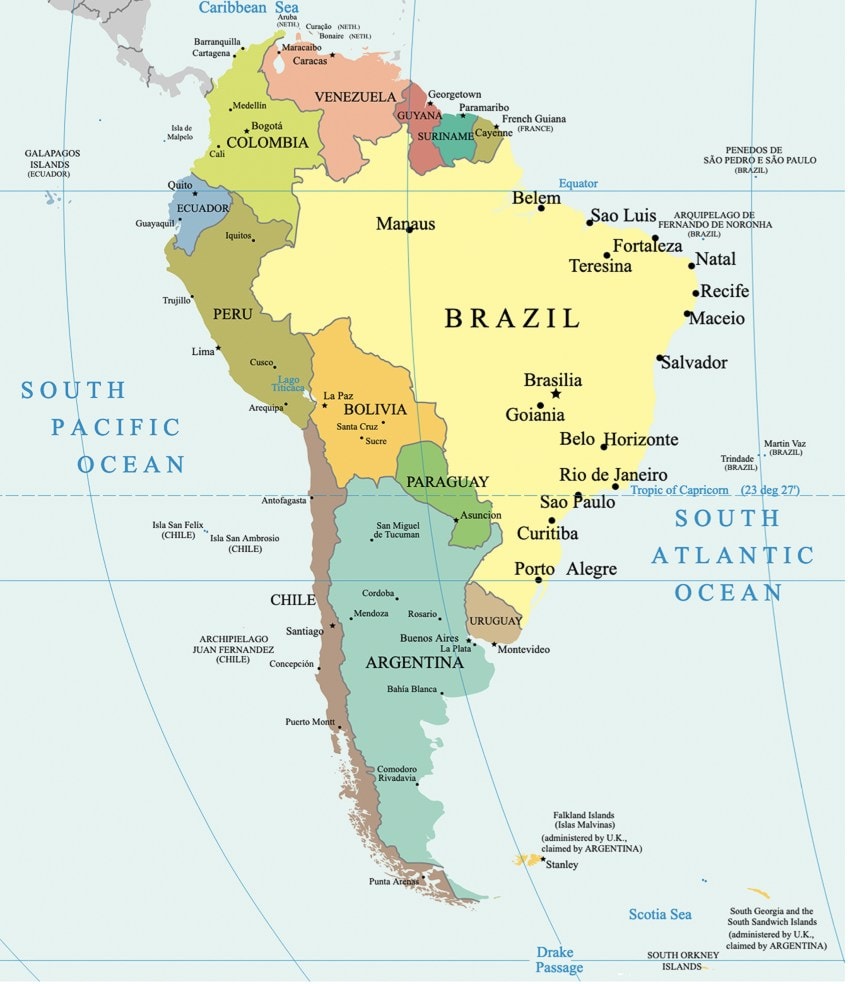
Latino art history has been closely tied to the deep-rooted history of the Americas. Furthermore, the Latin arts have had a shaky foundation and reception by society and are often overlooked and considered as peripheral or the “other”, and maybe mostly understood through various stereotypical perspectives.
But this has changed as America has been embracing its Latino roots even more, and we see collections of Latin American painting exhibitions and displays throughout cultural institutions. There is an increased spotlight placed on the value inherent in Latin American art, and so all the other branches, including South American art, which we will focus on more in this article.
The Colonization of the Americas
Firstly, what exactly do we mean when we speak about Latin arts or Latino art? For this, we need to look at history itself and where these terms originated. The term “Latin American” was supposedly first used as a means to distinguish some differences from the Americas with the people from North America, also referred to as the “Anglo-Saxons”.
It is reported that it was used during 1862 when Emperor Napoleon III invaded Mexico.
Apparently, the Mexicans and French realized their languages were not very different from each other. The period of colonization, which was from 1492 to 1810, was thought to be one of the primary shapers of the Latino culture. Latin America was conquered by Spain and Portugal, as well as the French Empire.
Latin Art
Latin American art is diverse and cannot all be placed within the same categorizations or considered a singular form of Latin Art. From each region, we find different genres, modalities, and styles of Latino art, and these all tell a unique and different story on their own. Below, we look at various examples by South American artists, from the early 20th century to more contemporary times.
There have been different styles or movements through Latin art history and one of the prominent exhibitions worth mentioning has been by the Museum of Modern Art (MOMA). The exhibition started on June 6 and lasted until September 7 in 1993, and was called Latin American Artists of the Twentieth Century.

It gave an impressive and significantly educational overview of Latin art, starting from the early 1900s to the more contemporary periods. It had over 300 artworks on the display of artists from all walks of life and media, for example, painting, drawing, sculpture, and various installations as well as others like photography.
The art movements covered from this exhibition were, namely, Early Modernism, Expressionism and Landscape Painting, Mexican Painting and Social Realism, Surrealism and Lyric Abstraction, Geometric Abstraction, and Kinetic Art, New Figuration, Pop Art, and Assemblage, and Recent Painting and Sculpture.
All these movements play a key role in the shaping of Latin arts and its diversity.
Muralism has also been one of the primary and most common forms of Latin artwork. Especially Mexican Muralism, which started around the 1920s. The purposes were to confront and unify Mexico, this was after the Mexican Revolution. Murals had a socio-political meaning. The primary artists associated with this movement were, namely, José Clemente Orozco, Diego Rivera, and David Alfaro Siqueiros.
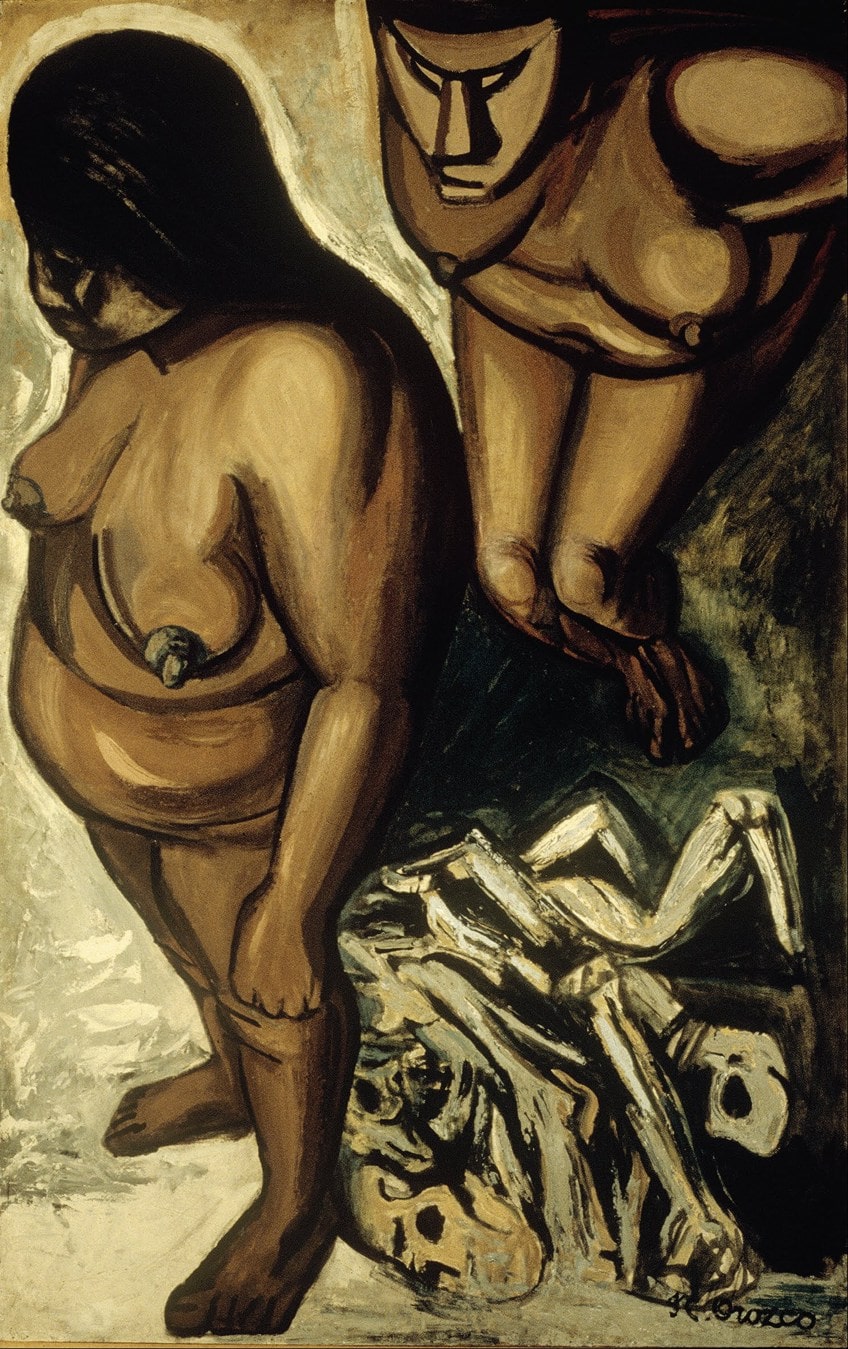
Surrealism was also an influential art movement, and one of the famous artists we know today is Frida Kahlo, she was considered a Surrealist and Magic Realist. She painted images conveying the pain she experienced as a woman as well as giving other women permission to express themselves. She has been a leading figure in Latino art history and is worth mentioning too.
To provide a Latin American painting example, some of Kahlo’s artworks include her famous Self-Portrait on the Borderline Between Mexico and the United States (1932), The Two Fridas (1939), Self-Portrait with Thorn Necklace and Hummingbird (1940), and Wounded Deer (1946).
South American Art
Below we look at South American art, specifically, we will look at pre-Columbian examples, which were before the 1500s and after the 1500s when Columbus colonized the Americas. Andean art primarily includes pre-Columbian South American art.
Some Pre-Columbian Examples
It was characterized by its wide range of modalities, including textiles, ceramics, as well as land art. There was a close connection between nature and art and the two were interconnected, in other words, art was also functional. Some examples include The Paracas Textile (100 to 300 C.E.), which is from Peru along the South Coast.
It was believed to be a head wrapping for the buried. It depicts various figures, believed to be shamans, holding severed heads. They also have wings, which are believed to carry them to another world, possibly the afterlife?
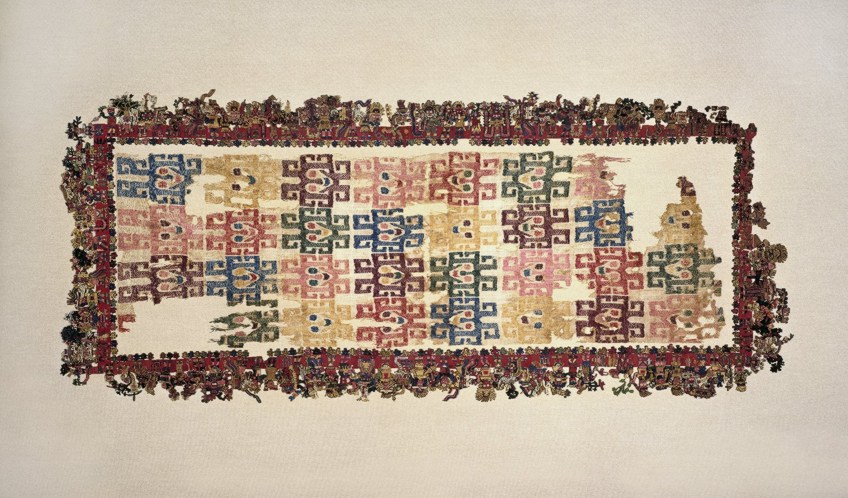
Other South American art examples include the magnificent land art called the Nazca Lines or Nazca Desert Geoglyphs, especially the formation called Hummingbird (c. 4th century B.C.). Although there were numerous other formations in the shape of animals like spiders, monkeys, and sea mammals like killer whales.
Hummingbird is in Peru on the South Coast is 300 feet long and constructed from various materials like stone. It is believed it was made by groups of people. The meaning of these massive structures is still debated. Some believe they were for deities because they can only be seen in their whole from above, an aerial view.

Other meanings might point to these structures used for people to walk them, like pilgrimages, and utilized these structures for more collective celebrations and ritual-based gatherings. However, other ideas suggest that the structures were intended for farming purposes and the fertility of crops. Other formations related to water could have been for crops to grow.
Additionally, these formations also pointed towards the mountainous areas where the gods resided, according to mythology. Again, these structures could have been to venerate deities.
Among South American art lies great architectural structures, for example, the Inka citadel called Machu Picchu (c. 1450 to 1540). It was constructed for Emperor Pachacuti Inka Yupanqui who would stay there during a select time of the year.
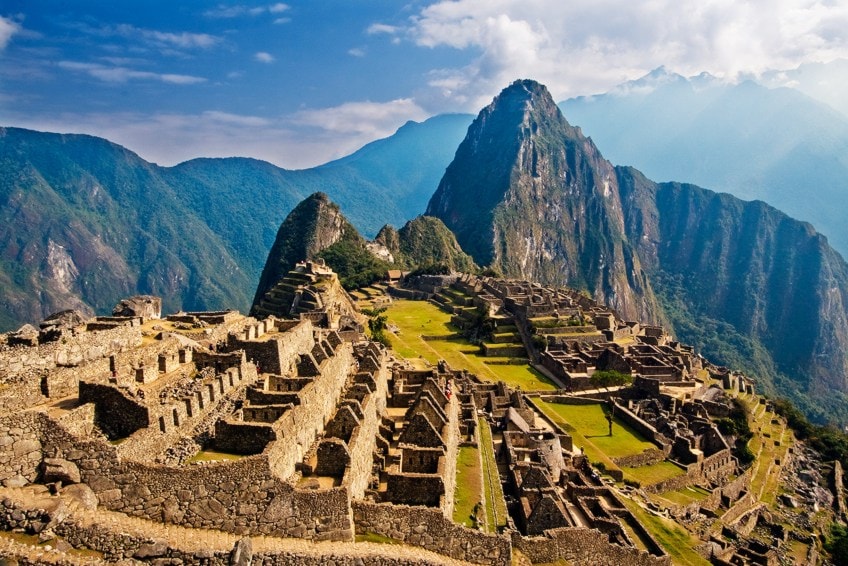
This was built as a mountain home, so to say, with upper and lower sections all with their own functions. It was able to accommodate not only the Inka Emperor and his family, but other housing, warehouses, areas for assistants, various religious areas, terraced areas, and more.
The structure was made from stones set next to the other, and these were also polished dry-stone walls.
The stones were reportedly made by being individually constructed to fit in next to the other. The stones that were polished appeared almost mosaic-like, this was on the outer walls, and undoubtedly would have added an aesthetic appeal.
There are three main religious structures at Machu Picchu, namely, The Temple of the Sun, which is also known as the Observatory. This structure was built to track constellations and solstices, more specifically the June solstice.
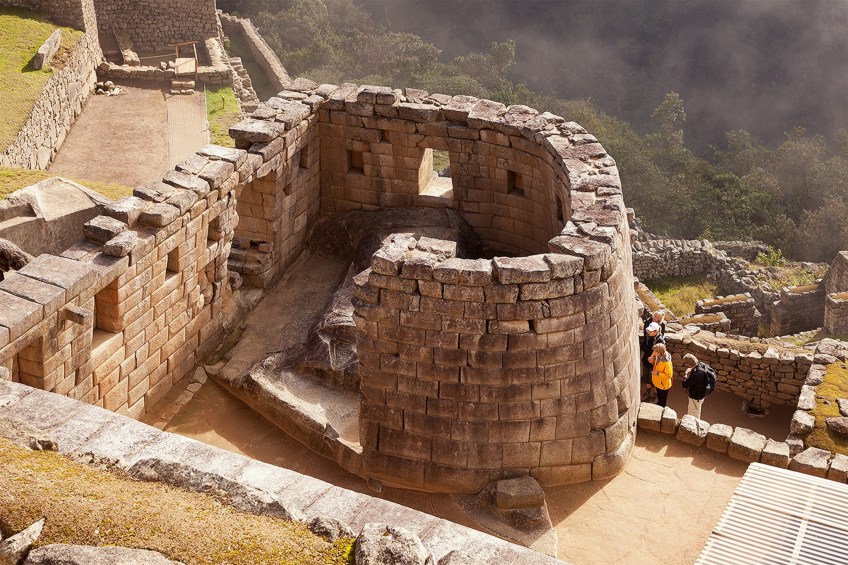
The Intihuatana stone is another religious structure, which means “hitching post of the sun”. It was made to trace the pathway of the sun across the sky throughout the year and during the Winter solstice it lines up with the sun. The Inka culture constructed numerous stones such as this one to track the sun.
Machu Picchu was only in active use for around 80 years and then abandoned due to Spanish invasions and conquests that threatened the livelihood of staying there. It has been a UNESCO World Heritage Site since 1983.
It has also been considered as one of the New Wonders of the World since 2007.
Columbian and Post-Columbian South American Art
It is important to note that Latin American history is complex and diverse, and this implicates how art was produced too. There are a vast number of different types of art created under hundreds of different circumstances. Therefore, we will look at a few examples of colonial, post-independence, and contemporary South American art.
Colonial Art
During the colonial period in South America, when Christopher Columbus founded the Americas in 1492, there were complex new systems and power structures at play. It was not just Christopher Columbus who founded the Americas, but the Portuguese also happened upon Brazil during the 1500s.
This was the Portuguese navigator Pedro Alvares Cabral who unintentionally found Brazil while he was trying to undertake the same route as the Portuguese Vasco da Gama, who sailed from Portugal to India in 1498 to create trade routes between the different continents, namely, Europe and Asia.

One of the primary attractions in Brazil was sugarcane farming; the Dutch also attempted to colonize Brazil, which was during the 1630s to 1650s. There were various Dutch artists who were commissioned to document Brazil’s natural environment as well as the Brazilian culture. One of these artists included a well-known artist during this time was Albert Eckhout (c. 1610 to 1665) who created South American art but from the European perspective.
Of Eckhout’s artwork is his series of eight figures who are representative of the different cultures he witnessed while painting in Brazil. The figures consist of four males and four females each standing in a pose reminiscent of European standards for how art was made.
As some sources suggest each person posed for the purpose of representing an ethnic group and not so much as an individual portrait, a blend of science and art, as well as an almost stereotypical approach to other cultures, which opens the debate of the concept of the “Other” and how it has been represented in art, especially by Europeans.
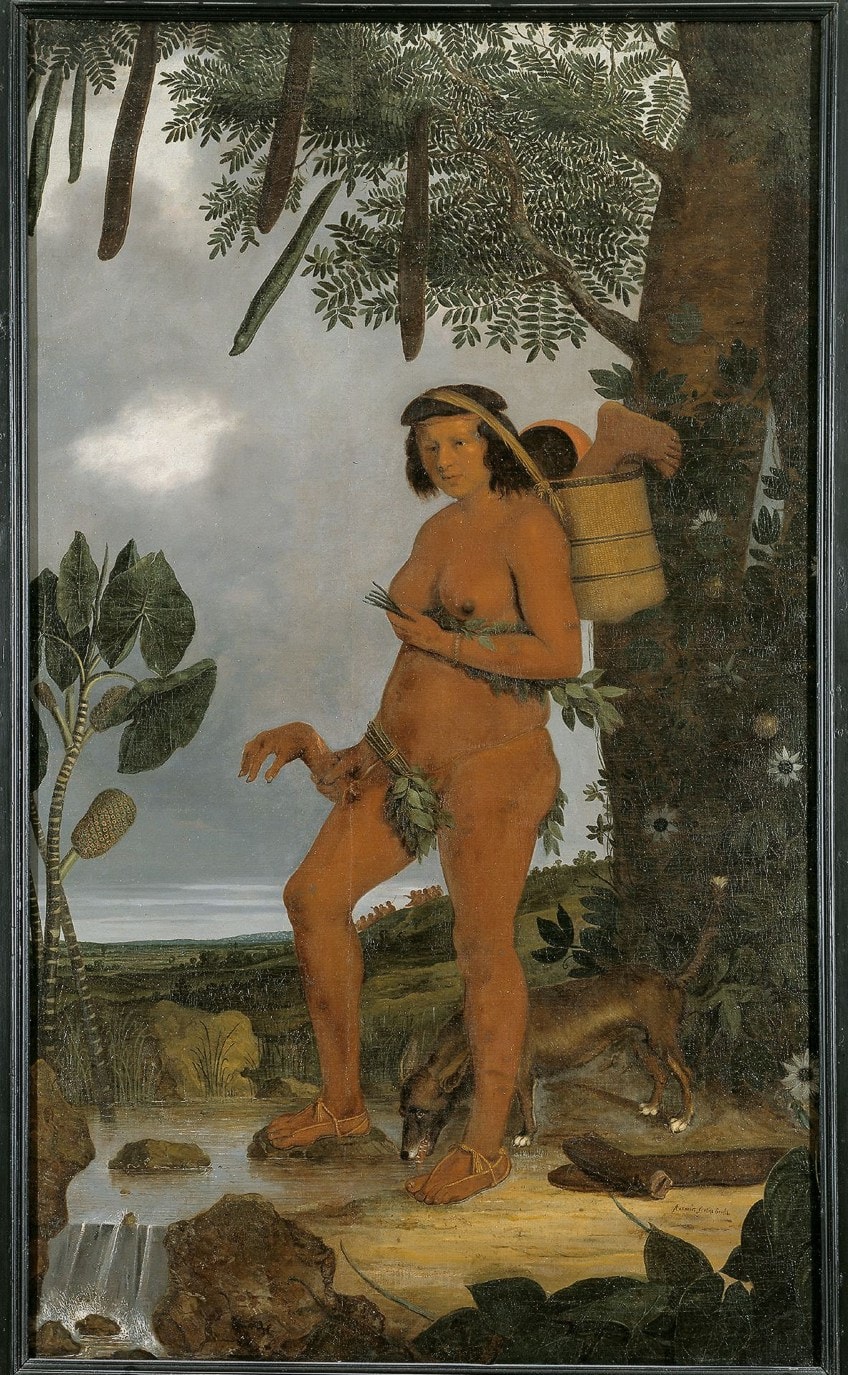
In the eight paintings, we see the male and female pairs from the Tapuyas, namely, the Tapuya Woman (1641) and the Tapuya Man (1641). Then there is the African pair, namely, the African Woman (1641) and the African Man (1641). The Brazilian pair, named similarly, the Brazilian Woman (1641) and the Brazilian Man (1641). Lastly, the Mameluca Woman (1641) and the Mulatto Man (1641).
Each figure is painted with culturally characteristic objects around them, including the landscapes and environments in the background.
For example, we see the Tapuya tribe woman carrying severed limbs, which alludes to them as cannibals and one of the tribes that fought against the Europeans. The Brazilian tribe is depicted as more “civilized” with the background landscape appearing more structured compared to the jungle-like setting of the Tapuyas. Furthermore, the Brazilians are clothed in neat white cloths covering their genitals, whereas the Tapuyas appear completely naked, their genitals sparsely covered with makeshift foliage.

The African couple is both depicted as strong figures, alluding to the notion of Africans being strong and used as slaves for this reason. We see cross-cultural objects in the woman’s painting, namely, the jewelry and pipe, which originates from Europe, the basket and hat originates from Africa, and the landscape with figures in the distance is Brazilian. The male figure is depicted in most probably North Africa and surrounded by items that were traded during that time, namely, the ivory tusk on the ground in the bottom right foreground and the date palm just behind the figure.
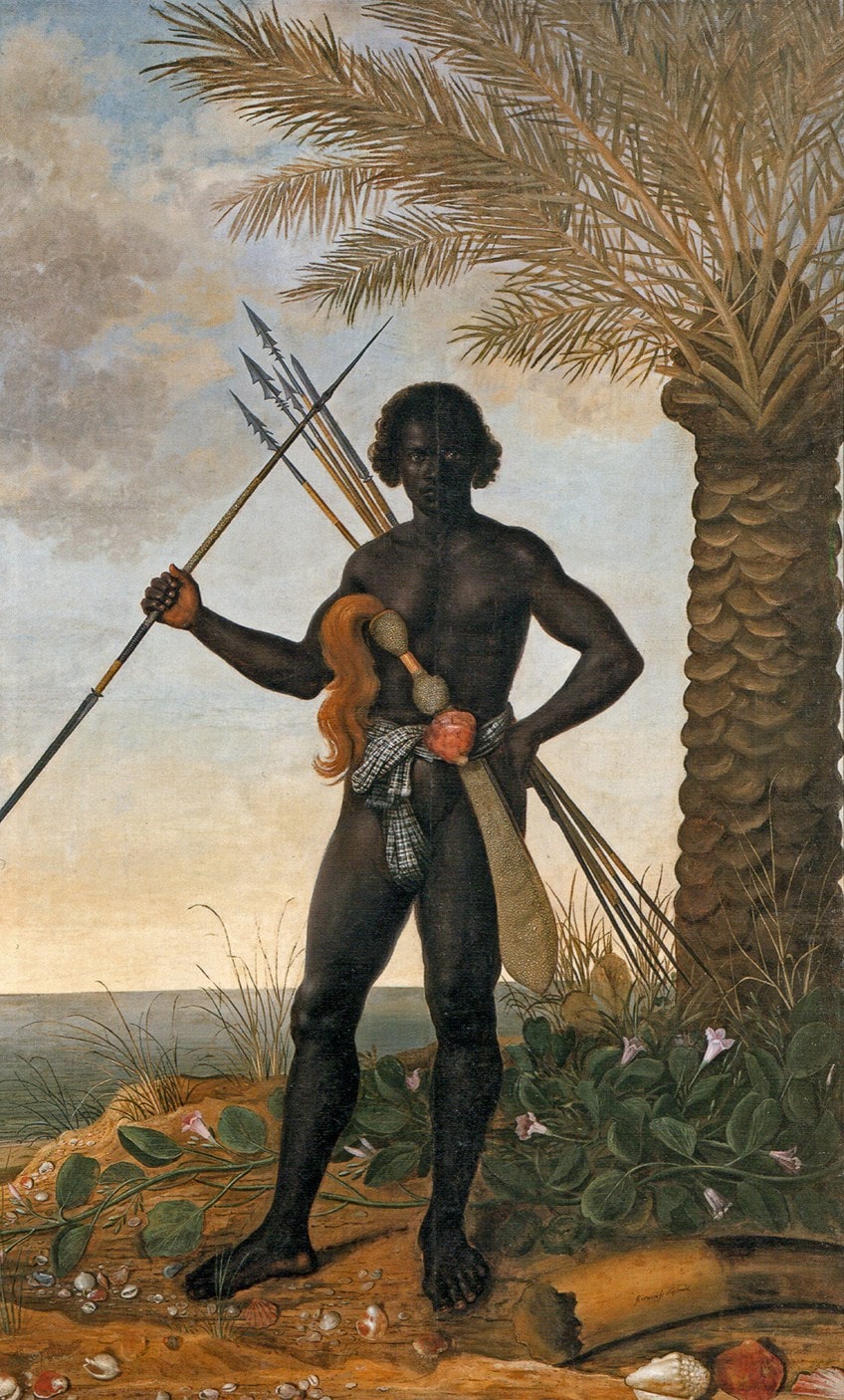
Lastly, the Mameluca Woman (1641) and the Mulatto Man (1641) suggest people who are mixed race. The woman shares indigenous and European ancestry and the male shares European and African ancestry. The stances for each are different and suggestive of their ethnicity. The woman wears a long white robe or dresses with her left leg (our right) slightly exposed to indicate her sexuality and desirability as a concubine. The man is depicted as standing on guard with the background depicting a sugarcane field. He wears clothing reminiscent of European and other cultures – a bit of both of these two worlds, so to say.
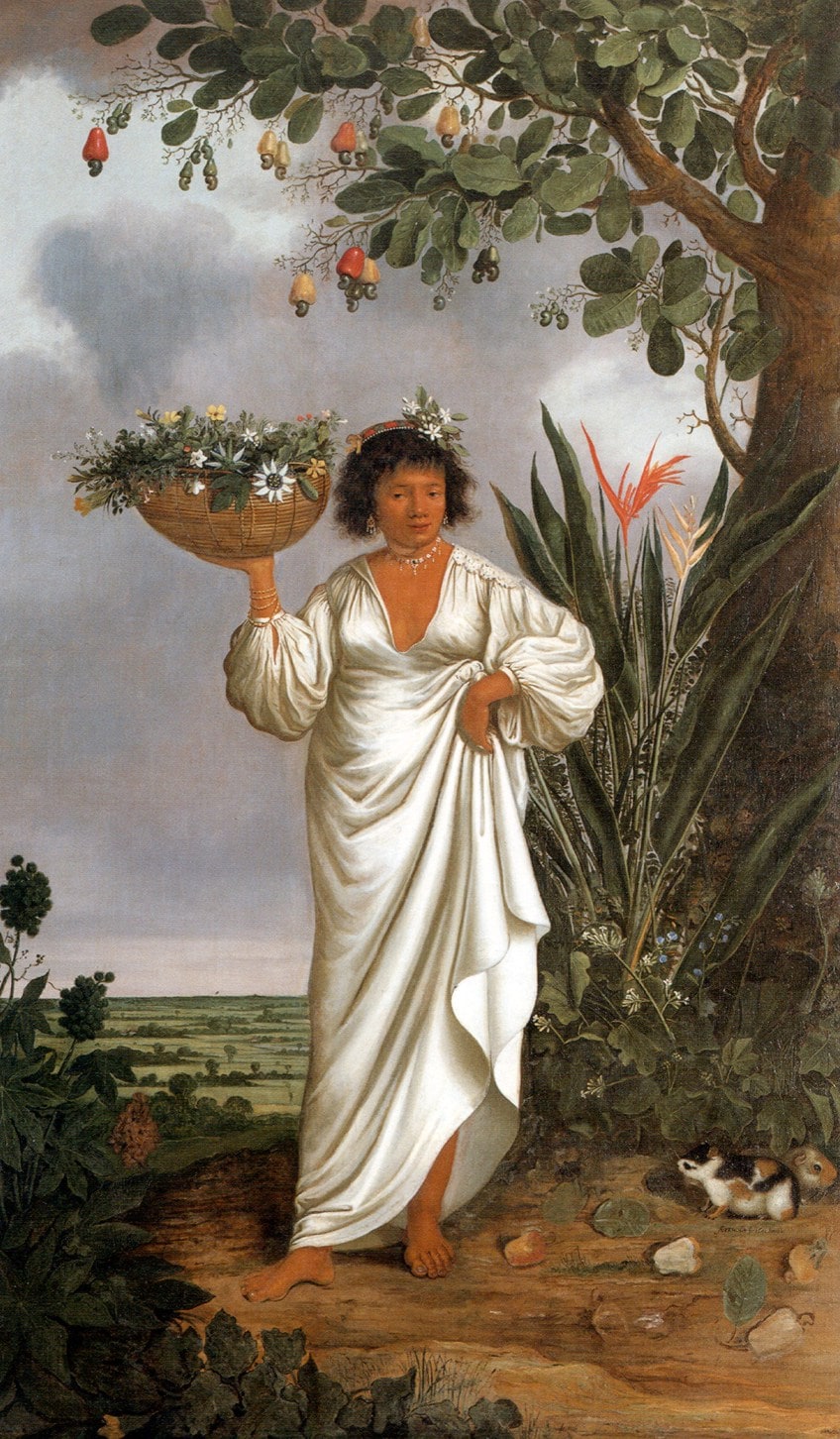
Post-Independence
If we look at an example from the post-Independence period of South America, and Latin America, which was around the later part of the 18th century and earlier 19th century we will find many examples of art that depicted the idea of independence and the battles related to it; art depicted heroic figures and the notion of liberation.
Some of the prominent art genres included Portraiture and History painting.
Pedro José Figueroa (1770 to 1838) was a Colombian painter who specialized in portraits. However, Figueroa’s lineage included other artists who also painted portraits as well as miniatures. What was interesting about Figueroa’s painting was his focus on figures that were deemed important in terms of liberation and military prowess.
One such figure Figueroa painted often was the Venezuelan Simón Bolívar. He was one of the major political and military figures who liberated not only Venezuela, but other South American countries like Peru, Ecuador, Colombia, Bolivia, and Panama from the conquest of the Spanish Empire during the 1800s. He is known by the name El Libertador and Liberator of America.

Examples of paintings include Figueroa’s oil on canvas Bolívar and the Allegory of America (1819) and Simón Bolívar: Liberator of Colombia (c. 1820). The heroic figure is depicted in a frontal pose with a body posture that appears stiff and upright. In both paintings above he wears his military uniform seemingly proudly with golden stars, epaulets, belt buckles, and his sword against his left hip (our right).
We will also notice words as part of the painting, which were utilized frequently in colonial artwork to emphasize the figure’s importance. Furthermore, in Bolívar and the Allegory of America, we see El Libertador standing next to the smaller figure of a woman, his right arm around her shoulders. She is holding a bow in her left hand with a set of arrows slung on her back. She appears disproportionate in size compared to him.
If we look at History painting, which was an important genre during this time, it depicts scenes of battles and important events.
José María Espinosa was a Colombian artist who depicted various historical moments from the Battle of Palo River. However, sources also point out that his painting Battle of Palo River (c. 1850) is more of a Landscape genre painting because of the artist’s focus on the environment and not so much the battle or figures pertinent to it.

Regardless of Spinosa’s genre, this painting is skillfully composed and depicts a vast landscape with a hazy setting sun in the far distance, billowing smoke near the left side in the middle ground, and two soldiers who appear in deep discussion with one another while riding their galloping horses towards the right side where we see a group of more soldiers straddling their horses. There is a sense of urgency in this scene and an ironic beauty of the environment surrounding the battle.
Contemporary South American Art and Artists
Below we discuss artists from the earlier 1900s to the more contemporary times as South American art has developed exponentially in so many modalities and media. While there are hundreds of talented South American artists, we urge you to explore them further beyond the artists we mention below.
The Brazilian Tarsila do Amaral (1886 to 1973) was amongst the pioneers of Latin American art during modernism.

She was multi-talented as a translator, painter, and draughtswoman. She was part of the Brazilian Modernism group called Grupo dos Cinco meaning “Group of Five”, the artists of which explored the meaning of being a Brazilian and touched on pertinent ideologies around identity, and paved the way for modernism in Brazil.
Furthermore, Amaral was also influenced by Surrealist art and after a period in Paris, she returned to Brazil where she started producing a new style of art. Her famous Abaporu (1928) oil on canvas painting was done as a present for her husband Oswald de Andrade. After this painting, he wrote the Anthropophagite Manifesto, which also developed into the movement called Anthropophagic Movement.
This manifesto and movement sought to “swallow” European styles. It was intended to inspire Brazilian artists to let go of the need to emulate European art and to embrace their Brazilian identities.
If we look at Abaporu, it depicts a nude man sitting on a patch of green grass, there is a green cactus to the right, and a bright yellow sun shining in the blue sky above. The sky makes up two-thirds of the background color with the grass around a third. This painting sounds quite simple; however, the figure of the man is uniquely rendered. His arm and leg are disproportionately large in the foreground and as we look up to his head it is minuscule in size as if we are viewing him through a special sort of telescope.
Amaral has described her figure as a “monstrous solitary figure”. Other examples by Tarsila do Amaral include Antropofagia (1929), which depicts another characteristic enlarged figure, in the nude, sitting amidst a natural landscape of foliage and large cacti with a blazing background sun.
A Negra (1923) depicts a nude female figure sitting cross-legged with a geometric background of dark blue, green, and red horizontal and diagonal bands. Here we also see the voluptuous appearance of the figure, her right breast (our left) hangs slightly over her right forearm (our left) with her elbow resting on her right knee (our left).
Her head is disproportionately smaller than her body and her eyes are very small compared to her full and larger lips. These are just some examples of the unique style from Amaral, a style she undoubtedly infused with her Brazilian identity and culture.
From the middle of the 1900s, the Colombian Fernando Botero (1932 to present) grew into a well-known artist, he even had a named style, which was “Boterismo”.
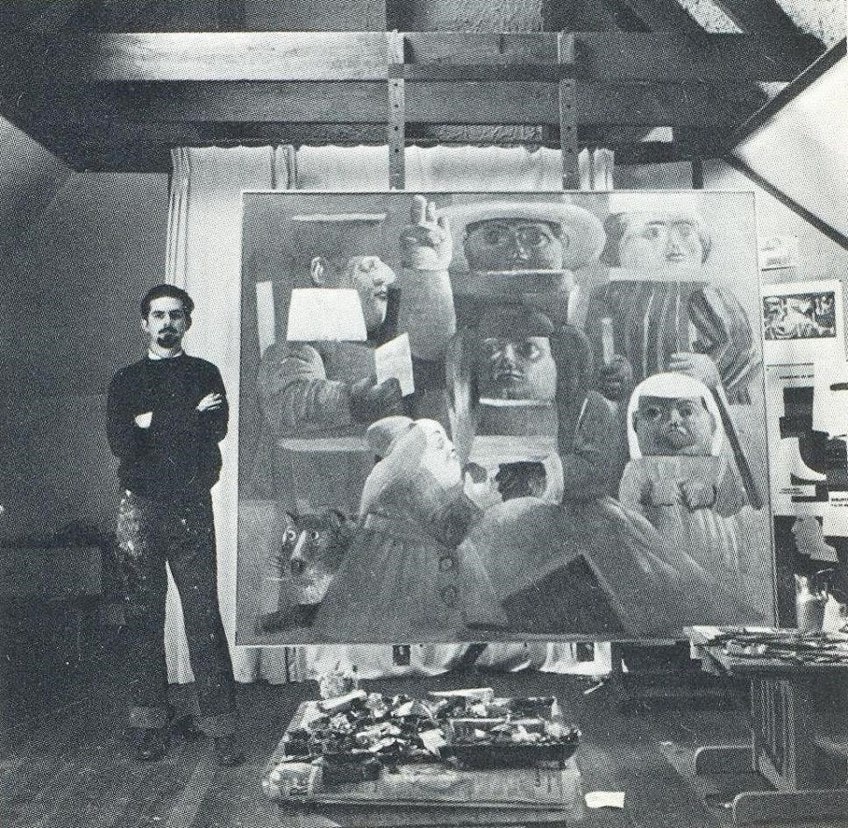
We can easily identify this style by his enlarged, or as they were called “fat”, and disproportionate figures. He often depicts them as very relaxed and lounging with an element of humor and as it has been described satire, however, there are also political and social undertones to his compositions.
Although he has traveled internationally and studied from the Renaissance art style, also studying fresco painting. Botero has called himself the “most Colombian artist living” because he does not seem interested in subscribing to artistic “trends” prevalent throughout the world.
Some of his artworks include Dancing in Colombia (1980), which depicts a café scene with seven over large musicians staring, quite blankly, straight at us, the viewers. They appear to be playing their instruments but somehow seem at a stand-still. In front of the musician is an adult couple dancing and enjoying themselves on the dance floor. The couple is depicted considerably smaller in size and compared to the musicians appear out of proportion and almost childlike, which makes the painting even more unique and mysterious. We will notice various cigarette buds and food lying on the floor and part of a jukebox to the left.
What is Botero communicating through this painting?
Some sources suggest that this café could indirectly indicate more than what we see, for example, who would the type of patrons that would frequent a café like this be and what would happen upstairs if there were rooms to rent? Although Botero fills up the composition with his full figures, he leaves room for us to imagine what else might be happening beyond the dance floor.
We will also find Botero’s figures beyond the canvas as numerous sculptures around the world. These range from voluptuous women, for example, Broadgate Venus (1989), soldiers like Man on Horse (1992), animals like Cat (1990), and a horse called Caballo con bridas (2009).
Eduardo Kobra (1975 to present) is a young South American artist from São Paulo in Brazil. He is a street artist who began painting at the early age of 12 years old. He has created thousands of murals all around the world. He draws attention to social and political figures by bringing them to every member of society through his murals on buildings. Examples include Ethnic Groups (2016), which was one of his largest murals for the Olympic Games, and Mother Teresa & Gandhi (2018).
Leo Chiachio (1969 to present) and Daniel Giannone (1964) upends gender stereotypes inherent in craft and textile art. As a gay couple, both from Argentina, they create hand-embroidered and textile mosaics that explore various traditional and modern stereotypes and social ideas.
They have held numerous collective and solo exhibitions of their works and have also been trained as painters.
The artistic duo describes their works as “painting made with threads” and focuses on themes around family and the diversity inherent in family structures. We will see this recurring theme depicting the couple and their dog in some examples like Nacimiento (2010), La Familia en la Fontana di Trevi (2011), Piolin Boogie Woogie (2012), and Calaverita (2014) among many others.
Celebrating Latin America
Latin America has stood the tests of time considering it has been through numerous conquests and colonial battles. The essence of power, independence, and liberation lies at the heart of Latin American art, whether it is from the early 19th, 20th, or 21st centuries. It is a culture now filled with diversity and the joy to express national identity and pride. Furthermore, Latin America has been perceived in stereotypical ways for years, and artists have been amongst those addressing these stereotypes and ideologies, putting the correct cultural pieces back into place.
This article explored a facet of Latin American art, seen from the vantage point of South American art. We briefly looked at it from the pre-Columbian era when art was not soiled by the metaphorical blood of battles from the colonial rule of European powers. We then looked at a few examples of colonial art and how different its motives were compared to the post-Independence artworks from the modern era. All the above has shown us that not just South American art, but the Latin arts, in general, is complex and diverse and worthy of being showcased and celebrated in all its glory, even if it is not always understood by the rest of the world.
Frequently Asked Questions
What Is South American Art?
South American art is part of Latin American art. Latin America is a collective term including the areas of South America, Central America, as well as countries from the Caribbean. The countries’ languages share the same origins from the Latin language for example French, Spanish, and Portuguese. South America comprises Argentina, Bolivia, Brazil, Chile, Colombia, Ecuador, Guyana, Paraguay, Peru, Suriname, Uruguay, Venezuela, and other areas.
How Old Is South American Art?
South American art goes as far back as ancient times to the Andean cultures, for example, who built famous sites like Machu Picchu. It has a rich pre-Columbian and colonial history and artworks that explore these social and political periods. The post-Independence period express a different type of South American art, filled with liberty and freedom, we will see the wide variety in hundreds of Modern and Contemporary South American and Latin artworks. Therefore, the timeline for South American art goes far back and is ever-expanding into the present and the future.
What Influenced Latin American Art?
Latin American art is diverse with different genres, modalities, and styles. It has been influenced by many other cultures, for example, France, Portuguese, Spanish, and Dutch. Modern and contemporary artists have also been influenced by European styles like the Renaissance, for example, however, some artists still maintain and stay grounded in the national identity and the Latin culture.
Isabella studied at the University of Cape Town in South Africa and graduated with a Bachelor of Arts majoring in English Literature & Language and Psychology. Throughout her undergraduate years, she took Art History as an additional subject and absolutely loved it. Building on from her art history knowledge that began in high school, art has always been a particular area of fascination for her. From learning about artworks previously unknown to her, or sharpening her existing understanding of specific works, the ability to continue learning within this interesting sphere excites her greatly.
Her focal points of interest in art history encompass profiling specific artists and art movements, as it is these areas where she is able to really dig deep into the rich narrative of the art world. Additionally, she particularly enjoys exploring the different artistic styles of the 20th century, as well as the important impact that female artists have had on the development of art history.
Learn more about Isabella Meyer and the Art in Context Team.
Cite this Article
Isabella, Meyer, “South American Art – An Exploration of Latino Art History.” Art in Context. January 12, 2022. URL: https://artincontext.org/south-american-art/
Meyer, I. (2022, 12 January). South American Art – An Exploration of Latino Art History. Art in Context. https://artincontext.org/south-american-art/
Meyer, Isabella. “South American Art – An Exploration of Latino Art History.” Art in Context, January 12, 2022. https://artincontext.org/south-american-art/.







